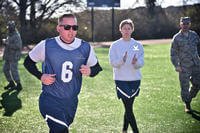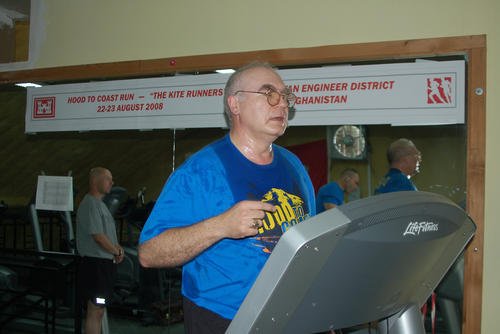When taking the Navy Physical Screening Test -- the common fitness test for jobs in the Navy that require swimming and diving -- you get a few options on how to swim. For jobs on the special operations/special warfare side (SEAL, SWCC, diver/EOD), you must swim a stroke that is considered an underwater recovery stroke, such as the breaststroke, elementary side stroke or a modified side stroke that is nicknamed the combat swimmer stroke (CSS). However, rescue swimmers can choose to swim freestyle.
Here is a question from a SEAL candidate who is doing well in all other events but the swim:
Good morning! I have auto-qualifying scores on my Navy PST except for my swim. I finished 500 yards in 15 minutes. Should I keep working on my CSS or do breaststroke? To contract out a little faster. Thanks, John
Congrats on "auto-qualifying" on all the other events (push-ups, sit-ups, pull-ups and the 1.5-mile timed run). Pushing the maximum effort on these events is the right attitude for your future profession. It sounds as though you are a typical non-swimming athlete candidate who has spent their athletic history on land, getting strong and fast.
This is great. However, you have a water weakness that needs to be addressed by fixing your technique and getting into swimming/treading shape. As a non-swimming athlete, your chances of picking up the breaststroke faster than the side stroke are likely slim. Unless you spend time perfecting a breaststroke (frog) kick through the year, your best bet is to go with the stroke that offers the scissor kick, which is easier for the non-swimming athlete to master.
Here's why. As a land athlete who runs and does leg exercises such as lunges or weight training, your hips are developed in such a way that a forward and backward leg kick (flutter kick/scissor kick) will be a more robust choice than a lateral (frog) kick. Your athletic history is ideal for moving your hips forward and backward in the longitudinal plane (think running and forward lunging), whereas athletes with a history of doing the breaststroke/frog kicks are better with the breaststroke.
Another reason you need to learn the CSS/side stroke is because most of your swimming and diving will be done with scuba fins. Since you are a land athlete, if you have some history in the weight room, your legs will be better suited for swimming with fins. Over the years, we have had many recruits who could barely pass the swim for the Navy PST. However, when they started their military training wearing scuba fins, their strong legs did the scissor/flutter-kick movement and performed above average in the class.
So stick to the CSS, as it is faster and more efficient than the side stroke. It is wise to add sets of breaststrokes, as learning the kick will help you with treading kick options for future selection testing challenges.
The following are videos to help you see what you need to be doing with both techniques to be more efficient with the stroke (fewer strokes per length of pool) and conditioning (swimming shape):
- Learning the CSS Video for non-swimming athletes
- The 50-50 Swim Workout -- Your Go-To for Dropping Time
- Work on Water Confidence.
- Treading Video
Check out the Military.com Fitness Section for more information on this type of training and more. There is something for everyone, from special ops candidates to regular military service members and those just wanting to get healthy.
Want to Learn More About Military Life?
Whether you're thinking of joining the military, looking for fitness and basic training tips, or keeping up with military life and benefits, Military.com has you covered. Subscribe to Military.com to have military news, updates and resources delivered directly to your inbox.


















